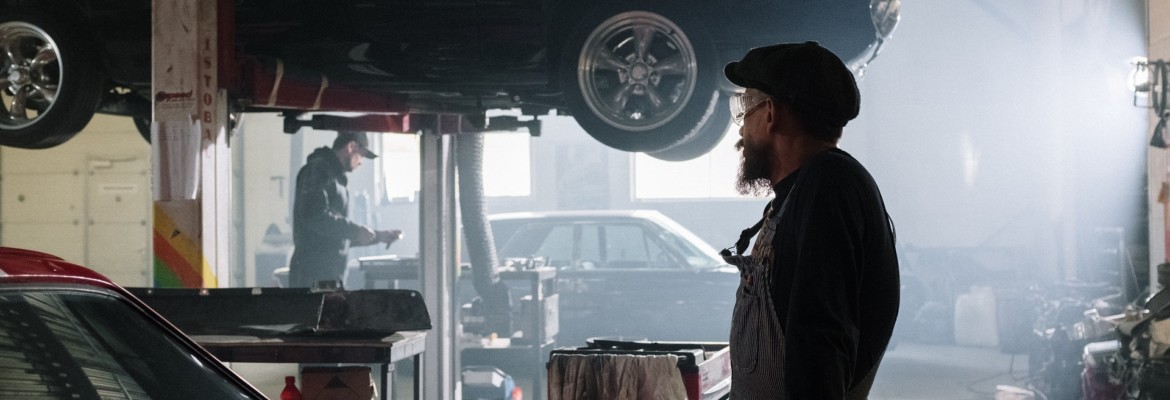STEADY IS THE BETTER WAY OVER BEING BUSY
By Bob Greenwood
One of the critical elements that independent shop owners must realize is that there are times when the shop can be too busy to make net income. It becomes dangerous when this is a constant. Management seems to concentrate more on getting more customers (car count) rather than concentrating on making a “profit” from the customers it already has. Shop staff are running around trying to please everyone that comes through the door, to insure the needed cash flow hits the bank account “today”. This is a sure signal that the business is heading for trouble.
The most important profit on a sale comes from the billed labour component which ensures the correct number of labour hours billed per vehicle service, based on the manufacturer’s recommendations. This is critical to the shop’s bottom line.
Your service is in the “knowledge” business, not the “commodity/volume” business, therefore your professional responsibilities to your clients go a lot further than just “selling them a job.”
Consider that the average client is unenlightened regarding proper service and maintenance of their current vehicle based on how they use it.
Consider that to properly advise and educate the client, the front counter should know how many kilometers (km) are driven each year; how the vehicle is used (highway, city, off-road driving; whether the client owns or leases the vehicle; what the client’s expectations are regarding the vehicle, and its service history.
Consider how many labour hours billed a year the vehicle requires to insure it is in safe, reliable condition, and efficient for the client.
It’s a professional responsibility to slow down and clearly educate the client about services required for the vehicle based on the manufacturer’s recommendations. Your shop is the messenger of the news, not the maker of the news. When the shop is “too busy,” everyone says there’s no time for this. That is absolutely right. It sounds like the shop is working “hard,” not necessarily smart
Do this test to see how you are faring.
1). Take a random five-to-10 survey count of the clients you have had for at least three years, where they still have the same vehicle, and examine the past two years’ work done on each vehicle. Add up the total number of labour hours from the work orders/invoices that were billed on each vehicle during those two years.
2). Calculate the total kilometers driven by each client over that service period (ie. 35,000 km which works out to 17,500 per year) and record what interval was the vehicle at when it came into the shop.(ie 60,000 km, or 130,000 km).
3). For the same time period, look up all the service requirements that were recommended by the manufacturer for the same kilometers driven and service interval, and calculate the total minimum labour hours the manufacturer recommended that should have been spent to ensure that vehicle is safe, reliable and efficient.
How did you make out? If you’re in the ball park, (five percent difference) well done. It looks like your system is working and you have a great relationship with your clients. But if you are severely short in billed time (you did not get all the work), it may be time to slow down and examine your internal customer service system. Do you educate and counsel them, or do you sell them? Do you have a trustworthy relationship with them? Is there room for improvement?
Now move on to the second phase of the test.
Take the same vehicles and examine what the manufacturer recommends for the next two years coming up based on the distance the client is most likely to drive. (Use the history here). Calculate the available labour hours to be billed. Now, be aware of your progress with these clients when they come in. Slow down. Take the time to educate the client. Show them what the manufacturer recommends by printing out the appropriate service intervals. You are the messenger here, that’s all. Based on your expertise, and understanding of the client, are these service recommendations a good investment for him to make? If so, point out how the relatively small investment makes sound financial sense, rather than spending a substantial amount of money to buy a new vehicle. If it isn’t a good investment, counsel the client on replacing the vehicle, and be happy to advise them based on their needs.
Your clients are usually too busy to look after their own vehicle. Set up the system to manage these high-tech machines for them. Many vehicles are unknowingly abused by the client because of the vehicle maintenance requirements the manufacturer recommends. Take the responsibility to insure your client base gets an excellent return on their investment. When you do, I’m confident you will also see the shop’s bottom line grow.
When you accomplish the right level of service with these clients, carry on and make it a system of doing business with the rest of your client base.
It’s up to management to make things happen. It’s up to management to make sure the right systems are in place. Take your time, and be patient with yourself to see this through. Give yourself a year of thorough dedication to making this happen. If it was easy everyone would do it, but the best thing is that your clients will notice the personal attention you are giving them, and that makes you distinctly different in this industry. Being distinctly different has people talking positively about your business. Now you are growing your business out of your marketplace.
Some people dream of success, while others wake up and work at it each day.


